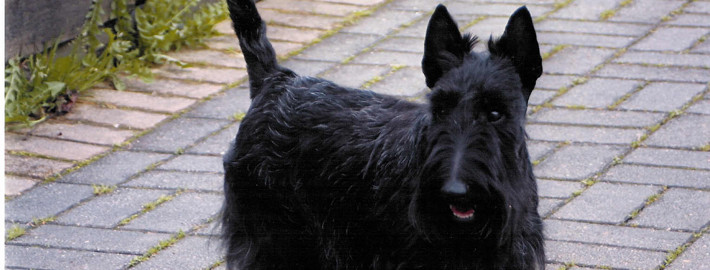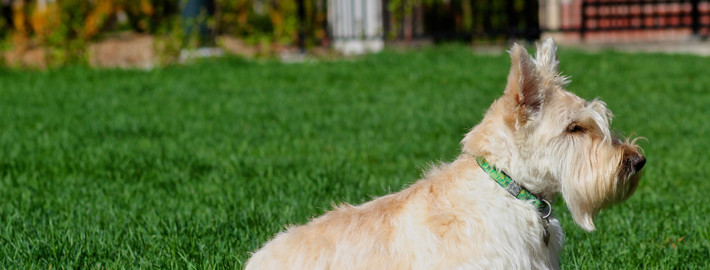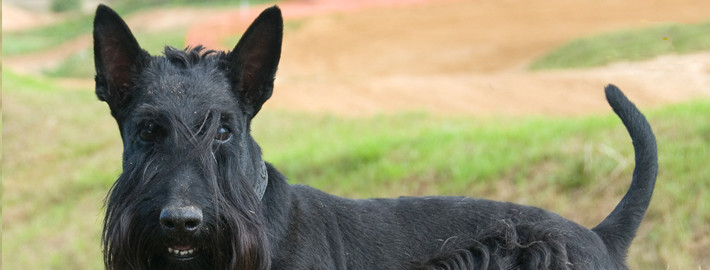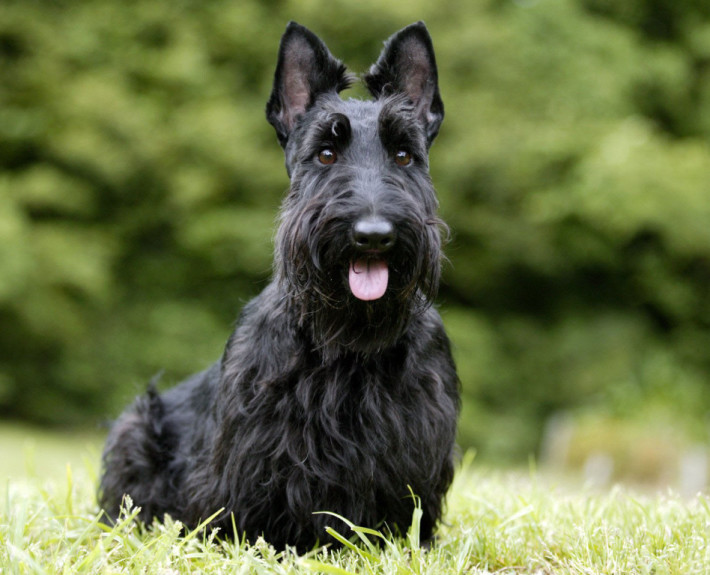What makes the Scottish Terrier Unique?
Originally developed to hunt rodents and other vermin, Scottish Terriers are now more commonly found as a companion and family pet. After all, these bold little dogs are incredibly loyal to their families and have mischievous personalities that often make them a much beloved member of the clan.
Page Contents
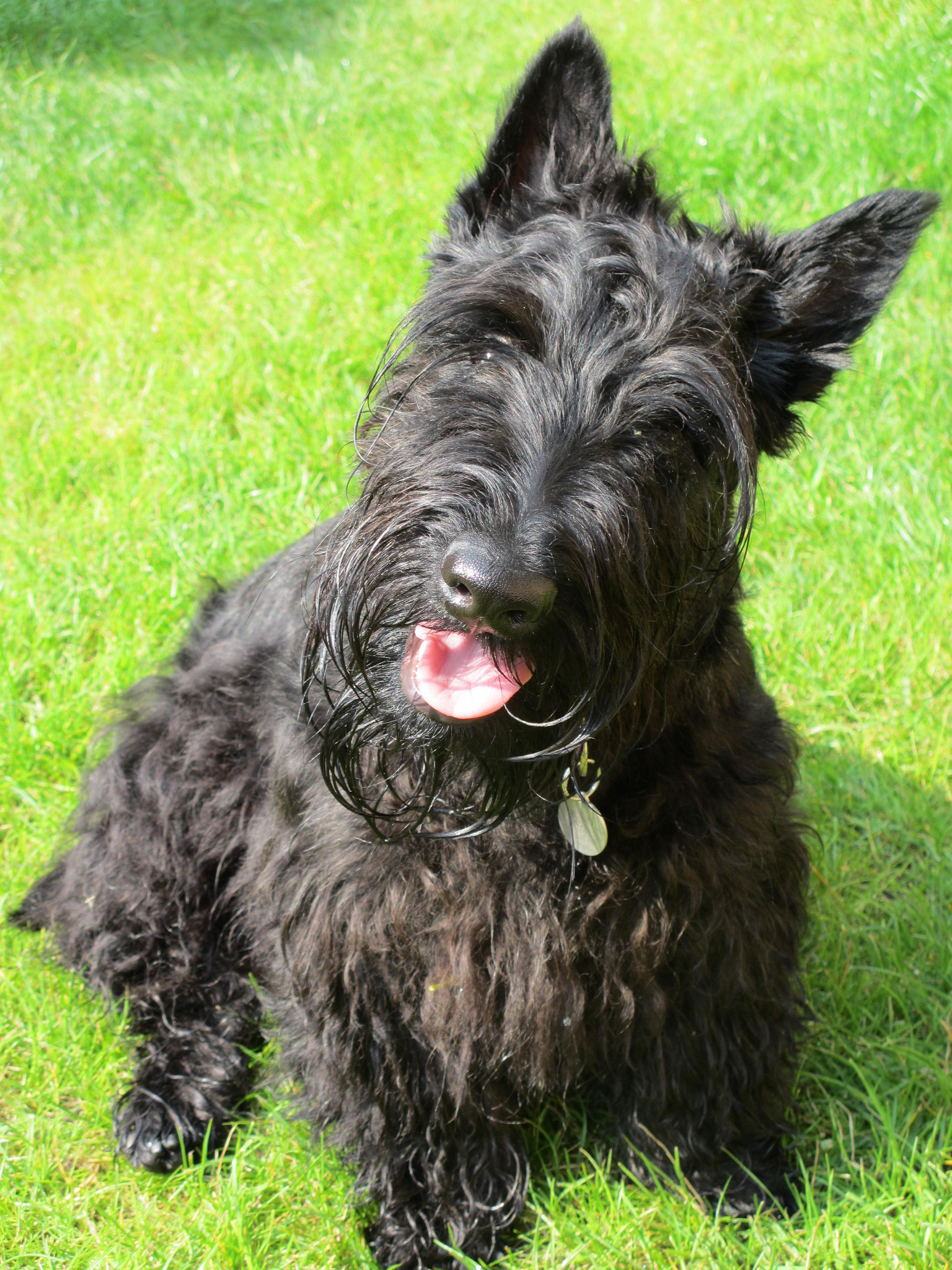
Is the Scottish Terrier Right For You?
Scottish Terriers are devoted family members that make excellent house pets. It may take a while for these dogs to become comfortable with new people but those they recognize are sure to receive a warm welcome years after having been introduced.
Obedience training is a must for Scottish Terriers because these dogs are notorious for pushing the boundaries set by their human owners. Members of this breed will also assume a leadership position in their households if they are not taught to listen at a young age. Therefore, it is best that families have a set of rules in place from the beginning and consistently hold their pets to these standards.
In 5 Words
- Alert
- Playful
- Quick
- Feisty
- Independent
Characteristics
Learn About the Scottish Terrier
Description
General Description
Scottish Terriers were bred to deal with fierce opponents in confined areas and their build reflects this fact. As a result, members of this breed have compact, sturdy bodies. They have large bones and short legs as well. These dogs have pointed, prick ears that should be covered with soft fur. Scottish Terriers should have a piercing gaze in their small, almond-shaped eyes. The preferred eye color in members of this breed is black but deep brown hues are similarly acceptable. Their characteristically shaggy beards and eyebrows compliment their dark eyes. Scottish Terriers also have thick coats that keep out the weather. Members of this breed carry their tails in an erect fashion.
Size
Both males and females of this breed stand between 10 and 11 inches (25 and 28 centimeters). Scottish Terriers typically weigh between 19 and 23 pounds (8.5 and 10.5 kilograms).
Coat
Scottish Terriers have double coats that are comprised of a coarse outer layer measuring about 2 inches (5 centimeters) long and a thick inner layer. Softer fur may be found on the dogs’ legs, beards, and lower bodies. However, members of this breed should not be fluffy or appear to be so. The outer portions of a Scottish Terrier’s coat will need to be kept trimmed so that it will have the characteristic breed silhouette. Dark grey, black, brindle, or wheaten hues are all acceptable colorations for these dogs.
Short History of the Scottish
All terriers that originated in Scotland were at one time referred to as Scotch or Scottish Terriers which leads to some confusion on the part of modern breed enthusiasts. In fact, the modern version was originally classified as being part of the Skye Terriers from the island bearing the same name. The first documented reference to any terrier in Scotland was in the late 1800s when these dogs were employed as vermin hunters. By 1880, a breed standard had been drawn up and published in the Illustrated Book of the Dog that was written by Vero Shaw. Shortly after that, Scottish Terriers made their way to America. Their popularity continued to grow with time and three members of this breed even have been owned by United States Presidents.
Temperament
Friendly if somewhat reserved around strangers, Scottish Terriers are devoted family members that make excellent house pets. It may take a while for these dogs to become comfortable with new people but those they recognize are sure to receive a warm welcome years after having been introduced. After all, Scottish Terriers have excellent memories. However, these dogs occasionally may gravitate towards one particular member of their human family rather than being best pals with everyone. These dogs are well known for their fearless, tenacious personalities but some individuals are also quite sensitive as well. This breed tends to become aggressive when confronted with other canines or pets so owners should exercise caution under such circumstances. Scottish Terriers also like to dig holes in their yards and are prone to barking overmuch.
Caring for Your Scottish Terrier
General Health
Members of this breed are born in litters averaging about 4 puppies each and typically live about 12 years. However, cancer is a chief health concern for this breed as these dogs often fall prey to its many forms. Therefore, it is recommended that owners prevent their pets from coming into contact with cigarette smoke as well as pesticides and herbicides. Owners will also need to be sure that their dogs eat a healthy diet and get enough exercise to keep problems from arising later on in life. Other health difficulties that may occur in Scottish Terriers include von Willebrands disease, Scottie cramp, patellar luxation, and allergies. Members of this breed may additionally suffer from certain ailments of the skin and of the jaws.
Care
Daily
Members of this breed need daily exercise.
Weekly
All pets should have their teeth brushed on a regular basis to prevent them from falling prey to otherwise avoidable illnesses.
Monthly
Heartworm, flea, and tick prevention medication is typically administered on a monthly basis as these products help reduce the risk of parasites in pets.
Grooming & Bathing
Owners will need to groom their dogs regularly. After all, Scottish Terriers have a thick coat which necessitates regular brushing and clipping to remove dead hair and to prevent their fur from becoming matted. Doing this every two months will help the dogs maintain their characteristic silhouettes. Every six months, Scottish Terriers will also require a professional haircut. Those that are not to be shown can simply have their hair trimmed but other dogs will need to have their coats hand stripped. This process helps texture a dog’s outer coats so that they look their best in the ring.
Exercise & Training
Scottish Terriers are small dogs that can get much of their exercise from romping about indoors. Playing catch is one of their favorite pastimes but these canines enjoy outdoor walks just as much. These dogs were bred as vermin hunters and will chase smaller animals if given the opportunity. As a result, they should not be let off the leash in unsecured areas. In general, members of this breed prefer cooler climates to those that are warm. Owners who live in hotter climates will need to take appropriate measures such as providing plenty of water and avoiding excessively warm portions of the day when exercising their pets.
Obedience training is a must for Scottish Terriers because these dogs are notorious for pushing the boundaries set by their human owners. Members of this breed will also assume a leadership position in their households if they are not taught to listen at a young age. Therefore, it is best that families have a set of rules in place from the beginning and consistently hold their pets to these standards. However, owners should be aware that harsh treatment will cause their Scottish Terriers to simply ignore them. Lavish praise and rewards based training are instead the best way to get members of this breed to do what they are told.

